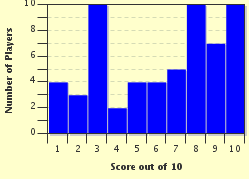Quiz Answer Key and Fun Facts
1. What is the origin of the city's name, Cork?
2. The ancient Irish founded few cities; Cork is one of Ireland's oldest. The first settlement at what is now the city of Cork dates to what period?
3. What is the name of the river that flows through Cork?
4. Geographically speaking, where is the city of Cork located in Ireland?
5. Which of these beers is strongly associated with the city of Cork?
6. This small town about 13 miles from Cork has two claims to fame. First, it was the final port of call for the Titanic before she sank, and, secondly, it was the place where many victims of the sinking of the Lusitania were buried. Formerly called Queenstown, what is it known as today?
7. Just outside the city of Cork is one of Ireland's most famous castles. Legend says that if you kiss a certain stone in one of its walls, you will be granted the gift of eloquence. Which castle is this?
8. Outside Cork's City Hall, there is a monument to a former mayor of Cork, who died on hunger strike during the Irish War of Independence. What was his name?
9. On December 11, 1920 what disaster struck the city of Cork?
10. Like most cities in Ireland, Cork enjoys a mild climate with a lot of rain. Which city in the United States lies on about the same latitude as Cork?
Source: Author
daver852
This quiz was reviewed by FunTrivia editor
Pagiedamon before going online.
Any errors found in FunTrivia content are routinely corrected through our feedback system.
